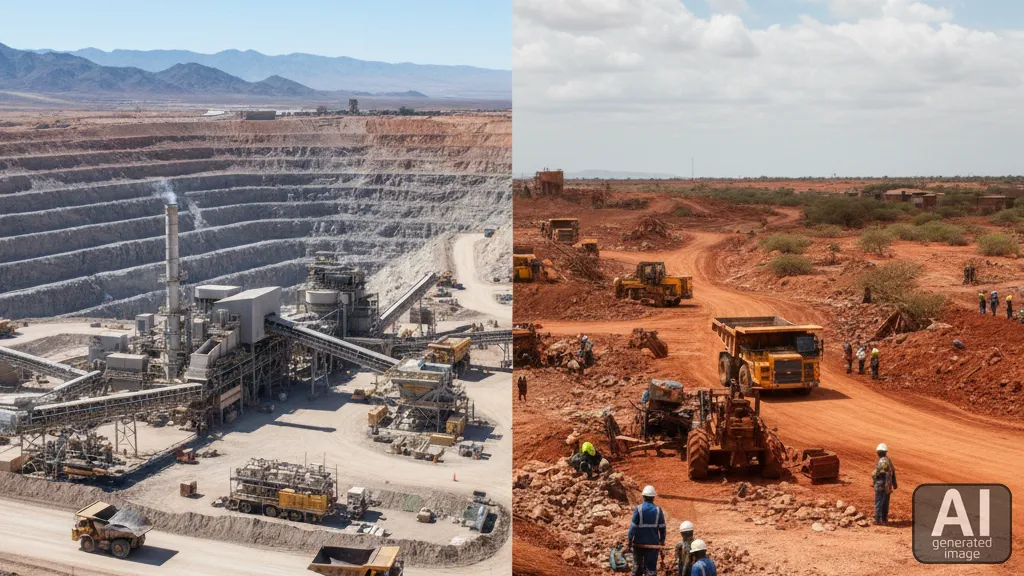Barrick Mining Weighs Major Split Into Two Global Entities

Barrick Mining considers splitting into North America and Africa Asia entities as investors push for value and reduced geopolitical risk.
Barrick Mining is examining a transformative restructuring plan that could divide the company into two distinct global entities, each with a sharply defined geographic focus. This potential split would separate Barrick’s stable North American operations from its more geopolitically exposed assets across Africa and Asia, a move that many investors believe could unlock value and deliver clearer strategic direction. With the company under mounting pressure to enhance its long term competitiveness and improve market perception, the proposal represents one of the most significant shifts in Barrick’s corporate strategy since its merger with Randgold in 2019.
The board is currently evaluating several options, including the creation of two separate companies or the sale of select international operations. Assets under review extend across Africa and Asia, such as the Democratic Republic of Congo, Tanzania, Papua New Guinea and Pakistan’s Reko Diq copper gold project, although any divestment of African holdings would require the resolution of existing disputes. In particular, the company must settle the ongoing conflict in Mali before it can proceed with any sale of the Loulo Gounkoto mine, which recently resulted in a one billion dollar write off and the detention of several employees. A split would reverse much of the acquisition strategy implemented by former CEO Mark Bristow, who championed growth in emerging markets following the Randgold merger. Barrick’s current leadership, including its interim CEO and company spokesperson, has refrained from commenting on the restructuring discussions, underscoring the sensitivity and early stage nature of the deliberations.
The proposed separation aligns with a renewed strategic emphasis on North America, where Barrick is prioritizing high quality, lower risk assets. Central to this strategy is Nevada’s Fourmile project, expected to begin test production in 2029 and regarded as one of the company’s most promising developments. Market confidence has strengthened in response to Barrick’s pivot toward North America, reflected in recent analyst upgrades and a 3 percent rise in the company’s share price on the Toronto Stock Exchange. Despite a dramatic 130 percent surge this year, Barrick’s five year return of 52 percent still trails competitors like Agnico Eagle at 142 percent, reinforcing investor arguments that geopolitical exposure in Africa, Papua New Guinea and Pakistan has weighed heavily on valuation.
If Barrick ultimately proceeds with a corporate split, the move could significantly reshape both the global gold mining landscape and investment perceptions of African mineral assets. A standalone North American entity built around Nevada’s highly valuable deposits could emerge as one of the world’s most capitalized gold mining companies, attracting capital that favors regulatory stability and lower operational risk. Conversely, the separation of African and Asian operations might shift the competitive dynamics of mining investment across the Global South, opening opportunities for regionally focused operators or new partnerships with state backed entities. For Africa in particular, such a restructuring could influence future deal making, risk premiums and investor expectations for governance, regulatory clarity and long term project stability.
Mini Glossary
- Geopolitical risk: The potential impact of political instability, conflict or regulatory uncertainty on business operations.
- Write off: An accounting action that reduces the value of an asset that is unlikely to be recovered.
- Divestment: The sale or disposal of company assets or subsidiaries.
- Capitalized company: A company with a large market value based on its outstanding shares.
- Emerging markets: Economies that are developing rapidly but may present higher risk due to political and economic volatility.
